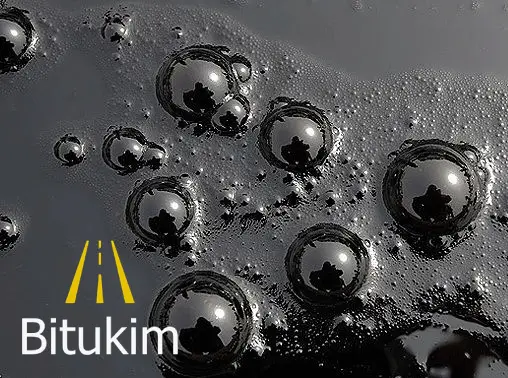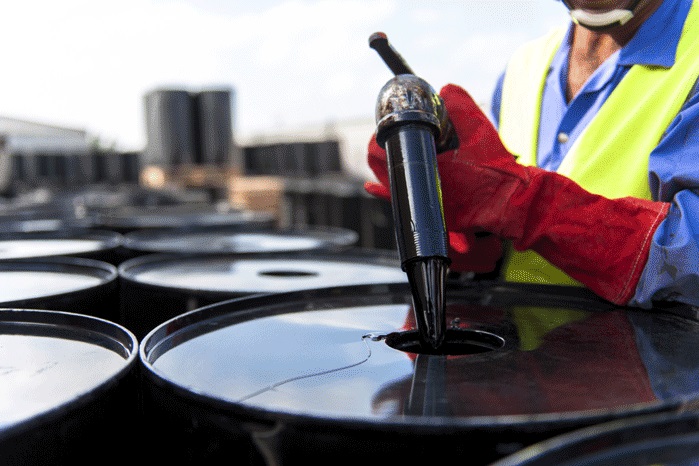Uses And Applications Of Bitumen

Bitumen, a versatile material derived from crude oil, has various uses and applications:
1.Uses And Applications Of Bitumen in Road Construction: Bitumen is extensively used as a binder in asphalt for road construction due to its adhesive and waterproofing properties.
2. Uses And Applications Of Bitumen in Roofing: It’s used in roofing materials like shingles and roofing felt due to its waterproofing capabilities.
3. Uses And Applications Of Bitumen as Waterproofing: Bitumen is used to waterproof various structures, including foundations, basements, and tunnels.
4. Uses And Applications Of Bitumen as paving: It’s used in paving applications such as parking lots, driveways, and airport runways due to its durability and ability to withstand heavy loads.
5. Adhesives: Bitumen-based adhesives are used in the manufacturing of various products like tapes, sealants, and membranes.
6. Uses And Applications Of Bitumen in Paints and Coatings: Bitumen-based paints and coatings are used for corrosion protection, waterproofing, and decorative purposes.
7. Insulation: Bitumen is used in insulation materials for buildings and pipelines due to its thermal properties.
8. Marine Applications: Bitumen is used in marine applications for protecting ships’ hulls against corrosion and providing waterproofing.
9. Soundproofing: It’s used in soundproofing materials for buildings, highways, and industrial applications.
10. Manufacturing: Bitumen is used in the manufacturing of products like electrical cables, automotive parts, and textiles.

History of bitumen
Natural asphalt (or bitumen) deposits, oil seepage and liquid oil shows are widespread in the Middle East, especially in the Zagros mountains of Iran.
Ancient people from northern Iraq, south-west Iran and the Dead Sea area extensively used this ubiquitous natural resource until the Neolithic period (7000 to 6000 BC). Evidence of earlier use has been recently documented in the Syrian desert near El Kown, where bitumen-coated flint implements, dated to 40,000 BC (Mousterian period), have been unearthed. This discovery at least proves that bitumen was used by Neanderthal populations as hafting material to fix handles to their flint tools.
Bitumen is one of the oldest binders used in road construction. This naturally occurring material found in deposits, such as bitumen lakes or bituminous rocks, has been used by humans for thousands of years. The progress of human civilization, advancements in technology, and the development of the automobile industry have increased the demand for better, durable roads. Thus, the production of refined bitumen from heavy crude oil has surpassed the use of natural bitumen. This has led to new solutions in binder design. These include modifications of its properties with the addition of natural bitumen or the use of various chemical compounds, predominantly polymers, for improved viscoelastic performance. Cold in-place recycling represented a step toward the wider use of bitumen emulsion. However, the breakthrough in the development of bitumen technology was the implementation of low-temperature bituminous paving mixtures. Sustainable, eco-friendly warm mix asphalt (WMA) and half-warm mix asphalt (HWMA) technologies use synthetic waxes or surface-active agents (SAA) for lowering bitumen viscosity. Water-foamed bitumen is the most recent innovative technique used in low-temperature mixtures. Systematic bitumen research is crucial for predicting bitumen characteristics and their effect on the performance of paving mixtures in pavement structures. The research, together with new laboratory testing technology and increased diagnostic requirements, will ensure the longer service life of pavements.
Various type of bitumen:
Bitumen comes in various types, each suited for specific applications based on their properties and characteristics:
1. Penetration Grade Bitumen: Classified based on penetration value, it indicates the hardness of the bitumen. Higher penetration values signify softer bitumen suitable for colder climates, while lower values indicate harder bitumen for warmer climates.
2. Viscosity Grade Bitumen: Classified based on viscosity, it indicates the flow characteristics of the bitumen at a specified temperature. Viscosity grades are commonly used in the United States and Canada.
3. Performance Grade Bitumen: Classified based on various performance parameters, such as temperature susceptibility and aging properties, it ensures the bitumen’s suitability for specific climate and traffic conditions.
4. Oxidized Bitumen: Modified through a controlled air-blowing process, oxidized bitumen has enhanced properties like higher softening point and improved resistance to aging and weathering. It’s often used in roofing and waterproofing applications.
5. Cutback Bitumen: Produced by blending bitumen with solvents like kerosene or diesel, cutback bitumen provides a lower viscosity for easier application. It’s commonly used in road construction and maintenance.
6. Emulsified Bitumen: Produced by blending bitumen with water and emulsifying agents, emulsified bitumen forms a stable suspension suitable for cold application. It’s often used in road construction and maintenance, especially in areas with limited access to hot mix plants.
7.Polymer Modified Bitumen (PMB): Enhanced with polymers like styrene-butadiene-styrene (SBS) or styrene-butadiene rubber (SBR), PMB offers improved properties such as elasticity, durability, and resistance to rutting and cracking. It’s used in high-stress asphalt pavements and special applications like airport runways.

